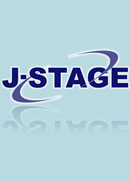19 巻, 2 号
選択された号の論文の19件中1~19を表示しています
- |<
- <
- 1
- >
- >|
-
2007 年 19 巻 2 号 p. 35-39
発行日: 2007/12/01
公開日: 2012/09/24
PDF形式でダウンロード (1119K) -
2007 年 19 巻 2 号 p. 40-46
発行日: 2007/12/01
公開日: 2012/09/24
PDF形式でダウンロード (1235K) -
2007 年 19 巻 2 号 p. 47-50
発行日: 2007/12/01
公開日: 2012/09/24
PDF形式でダウンロード (1418K) -
2007 年 19 巻 2 号 p. 51
発行日: 2007/12/01
公開日: 2012/09/24
PDF形式でダウンロード (97K) -
2007 年 19 巻 2 号 p. 52-53
発行日: 2007/12/01
公開日: 2012/09/24
PDF形式でダウンロード (285K) -
2007 年 19 巻 2 号 p. 54-58
発行日: 2007/12/01
公開日: 2012/09/24
PDF形式でダウンロード (1642K) -
2007 年 19 巻 2 号 p. 59-64
発行日: 2007/12/01
公開日: 2012/09/24
PDF形式でダウンロード (671K) -
2007 年 19 巻 2 号 p. 65-69
発行日: 2007/12/01
公開日: 2012/09/24
PDF形式でダウンロード (1768K) -
2007 年 19 巻 2 号 p. 70-74
発行日: 2007/12/01
公開日: 2012/09/24
PDF形式でダウンロード (834K) -
2007 年 19 巻 2 号 p. 75-79
発行日: 2007/12/01
公開日: 2012/09/24
PDF形式でダウンロード (1444K) -
2007 年 19 巻 2 号 p. 80-82
発行日: 2007/12/01
公開日: 2012/09/24
PDF形式でダウンロード (534K) -
2007 年 19 巻 2 号 p. 83-86
発行日: 2007/12/01
公開日: 2012/09/24
PDF形式でダウンロード (1988K) -
2007 年 19 巻 2 号 p. 87-92
発行日: 2007/12/01
公開日: 2012/09/24
PDF形式でダウンロード (5201K) -
2007 年 19 巻 2 号 p. 93-100
発行日: 2007/12/01
公開日: 2012/09/24
PDF形式でダウンロード (5879K) -
2007 年 19 巻 2 号 p. 101-105
発行日: 2007/12/01
公開日: 2012/09/24
PDF形式でダウンロード (2682K) -
2007 年 19 巻 2 号 p. 106-109
発行日: 2007/12/01
公開日: 2012/09/24
PDF形式でダウンロード (1433K) -
2007 年 19 巻 2 号 p. 110-114
発行日: 2007/12/01
公開日: 2012/09/24
PDF形式でダウンロード (1123K) -
2007 年 19 巻 2 号 p. 115-119
発行日: 2007/12/01
公開日: 2012/09/24
PDF形式でダウンロード (1654K) -
2007 年 19 巻 2 号 p. 120-124
発行日: 2007/12/01
公開日: 2012/09/24
PDF形式でダウンロード (762K)
- |<
- <
- 1
- >
- >|
